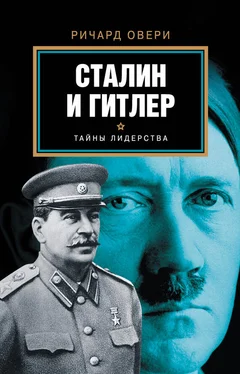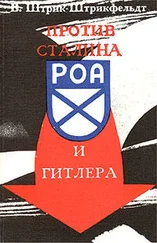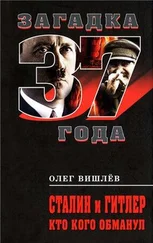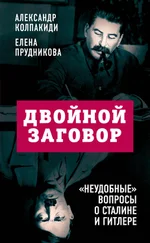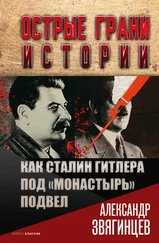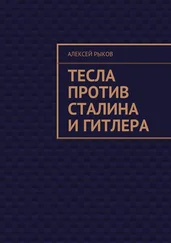5. See I. Kershaw The ‘Hitler Myth’: Image and Reality in the Third Reich (Oxford, 1987), pp. 83–104; I. Kershaw ‘The Führer-Image and Political Integration: the Popular Conception of Hitler in Bavaria during the Third Reich’, in G. Hirschfeld and L. Kettenacker (eds) Der ‘Führerstaat’: Mythos and Realität (Stuttgart, 1981), pp. 133–60.
6. Engelmann, In Hitler’s Germany, p. vii.
7. A. Solzhenitsyn The Gulag Archipelago 1918–1956 (London, 1974), pp. 18–20.
8. See for example the political police reports in J. Schadt (ed.) Verfolgung und Widerstand unter dem Nationalsozialismus in Baden. Die Lageberichte der Gestapo und des Generalstaatsanwalts Karslruhe 1933–1940 (Stuttgart, 1976). These reports were structured to report any manifestations of hostility or non-compliance, but not evidence of complicity or enthusiasm.
9. J.-P. Depretto ‘L’opinion ouvriere (1928–1932)’, Revue des Etudes Slaves, 66 (1994), pp. 59.
10. For example Schadt, Verfolgung und Widerstand in Baden, p. 107, ‘Stand und Tätigkeit der staatsfeindlichen Betätigungen’, 4 October 1934.
11. D. Schmiechen-Ackermann Nationalsozialismus und Arbeitermilieus: Der nationalsozialistische Angriff auf die proletarischen Wohnquartiere und die Reaktion in den sozialistischen Vereinen (Bonn, 1998), p. 756.
12. L. Siegelbaum ‘Soviet Norms Determination in Theory and Practice 1917–1941’, Soviet Studies, 36 (1984), pp. 46–8; on worker legal protection in the 1920s see M. Ilic Women Workers in the Soviet Inter-War Economy: From ‘Protection’ to ‘Equality’ (London, 1999), pp. 46–52.
13. J.-P. Depretto Les Ouvriers en U.R.S.S. 1918–1941 (Paris, 1997), pp. 276–7; T. Szamuely ‘The Elimination of Opposition between the Sixteenth and Seventeenth Congresses of the CPSU’, Soviet Studies, 17 (1966), pp. 335–6; A. Graziosi A New, Peculiar State: Explorations in Soviet History 1917–1937 (Westport, Conn., 2000), pp. 179–83; J. B. Sorensen The Life and Death of Soviet Trade Unionism 1917–1918 (New York, 1969), pp. 245–53.
14. Graziosi, New, Peculiar State, pp. 190–91.
15. Graziosi, New, Peculiar State, pp. 192–4; D. Filtzer ‘Stalinism and the “Working Class in the 1930s’, in J. Channon (ed.) Politics, Society and Stalinism in the USSR (London, 1998), pp. 172–8; Szamuely, ‘Elimination of Opposition’, pp. 336–7; D. Filtzer Soviet Workers and Stalinist Industrialization: the Formation of Modern Soviet Production Relations 1918–1941 (London, 1986), pp. 107–15, 135–46.
16. V. Kravchenko I Chose Freedom: The Personal and Political Life of a Soviet Offi cial (London, 1947), pp. 311–15; L. E. Hubbard Soviet Labour and Industry (London, 1942), pp. 96–7.
17. J. Harrer ‘Gewerkschaftlicher Widerstand gegen das “Dritte Reich”’, in F. Deppe, G. Fülberth and J. Harrer (eds) Geschichte der deutschen Werkschaftsbewegung (4th edn, Cologne, 1989), pp. 349–56; S. Mielke and M. Frese (eds) Die Gewerkschaften im Widerstand und in der Emigration 1933–1945 (Frankfurt am Main, 1999), pp. 13–17; G. Mai’ “Warum steht der deutsche Arbeiter zu Hitler?” Zur Rolle der Deutschen Arbeitsfront im Herrschaftssystem des Dritten Reiches’, Geschichte und Gesellschaft, 13 (1987), pp. 215–17.
18. C. W. Guillebaud The Economic Recovery of Germany, 1933–1938 (London, 1939), pp. 110–11.
19. Harrer, ‘Gewerkschaftlicher Widerstand’, p. 344.
20. Harrer, ‘Gewerkschaftlicher Widerstand’, pp. 346–9; Mielcke and Frese, Gewerkschaften in Widerstand, pp. 13–16.
21. Harrer, ‘Gewerkschaftlicher Widerstand’, pp. 372–7; G. Beier Die illegale Reichsleitung der Gewerkschaften 1933–1945 (Cologne, 1981), pp. 41–3, 73.
22. A. Merson Communist Resistance in Nazi Germany (London, 1985), p. 182. The fi gure of 60,000 includes all those estimated to have been active after 1933. In January 1933 the party had 360,000 members.
23. Schadt, Verfolgung und Widerstand in Baden, pp. 106–9, ‘Lagebericht des Gestapa Karlsruhe’, 4 October 1934.
24. G. Plum ‘Die KPD in der Illegalität’, in H. Graml (ed.) Widerstand im Dritten Reich: Probleme, Ereignisse, Gestalten (Frankfurt am Main, 1994), pp. 167–70.
25. Harrer, ‘Gewerkschaftlicher Widerstand’, p. 369; K. H. Roth Facetten des Terrors: Der Geheimdienst der “Deutsche Arbeitsfront’ und die Zerstörung der Arbeiterbewegung 1933 bis 1938 (Bremen, 2000), pp. 36–8.
26. Roth, Facetten des Terrors, pp. 9–21; Harrer, ‘Gewerkschaftlicher Widerstand’, p. 370; G. Lotfi KZ der Gestapo: Arbeitserziehungslager im Dritten Reich (Stuttgart, 2000), pp. 25–42, 114–21.
27. Depretto, ‘L’opinion ouvriere’, pp. 53–8; E. Osokina Our Daily Bread: Socialist Distribution and the Art of Survival in Stalin’s Russia (New York, 2001), pp. 53–6.
28. Filtzer, ‘Stalinism and the Working Class’, pp. 168–9.
29. J. J. Rossman ‘The Teikovo Cotton Workers’ Strike of April 1932: Class, Gender and Identity Politics in Stalin’s Russia’, Russian Review, 56 (1997), p. 44.
30. Rossman, ‘Teikovo Cotton Workers’ Strike’, pp. 46–63; see too J. J. Rossman ‘A Workers’ Strike in Stalin’s Russia: the Vichuga Uprising of April 1932’, in L. Viola (ed.) Contending with Stalinism: Soviet Power and Popular Resistance in the 1930s (Ithaca, NY, 2002), pp. 44–80. This strike, too, was defeated by police repression, though it brought some economic alleviation.
31. See J. Falter and M. H. Kater ‘Wähler und Mitglieder der NSDAP’, Geschichte und Gesellschaft, 19 (1993), pp. 155–77.
32. Mielke and Frese, Gewerkschaften im Widerstand, pp. 13–15.
33. On the fate of the other socialist parties see V. N. Brovkin The Mensheviks after October: Socialist Opposition and the Rise of the Bolshevik Dictatorship (Ithaca, NY, 1987); V. N. Brovkin (ed.) The Bolsheviks in Russian Society: the Revolution and the Civil Wars (New Haven, Conn., 1997), esp. chs 2, 4 and 7; A. Liebich ‘The Mensheviks’, in A. Geifman (ed.) Russia under the Last Tsar: Opposition and Subversion 1894–1917 (Oxford, 1999), pp. 19–33.
34. R. Löhmann Der Stalinmythos: Studien zur Sozialgeschichte des Personenkultes in der Sowjetunion (Münster, 1990), p. 205; Depretto, Les Ouvriers en U.R.S.S., p. 367.
35. Löhmann, Stalinmythos, pp. 206–15; V. Andrle Workers in Stalin’s Russia: Industrialization and Social Change in a Planned Economy (New York, 1988), p. 35; Ilič, Women Workers, p. 185; Filtzer, Soviet Workers, pp. 57–65.
36. K. M. Strauss Factory and Community in Stalin’s Russia: the Making of an Industrial Working Class (Pittsburgh, 1997), pp. 23–4, 268–81.
37. H. Potthoff Freie Gewerkschaften 1918–1933: Der Allgemeine Deutsche Gewerkschaftsbund in der Weimarer Republik (Düsseldorf, 1987), p. 346.
38. W. Benz ‘Vom freiwilligen Arbeitsdienst zur Arbeitsdienstpfl icht’, Vierteljahrshefte für Zeitgeschichte, 16 (1968), pp. 317–46;
D. P. Silverman Hitler’s Economy: Nazi Work Creation Programs, 1933–1936 (Cambridge, Mass., 1998), p. 168–72, 195–8.
39. Schmiechen-Ackermann, Nationalsozialismus und Arbeitermilieus, pp. 432–4, 487–90, 674–84; M. Schneider Unterm Hakenkreuz: Arbeiter und Arbeiterbewegung 1933 bis 1939 (Bonn, 1999), pp. 347–411, 736–51.
40. Strauss, Factory and Community, pp. 272–4; L. Siegelbaum Stakhanovism and the Politics of Productivity in the USSR, 1935–1941 (Cambridge, 1988) pp. 146–8, 163–8, 179–90. By the late 1930s there were 3 million workers classifi ed as Stakhanovites, but mobility into and out of the category was high.
41. Strauss, Factory and Community, p. 195.
42. Filtzer, ‘Stalinism and the Working Class’, pp. 172–4.
43. Siegelbaum, ‘Soviet Norms Determination’, pp. 53–6; on the breakdown of collectives L. Siegelbaum ‘Production Collectives and Communes and the “Imperatives” of Soviet Industrialization’, Slavic Review, 45 (1986), pp. 67, 73–81.
Читать дальше
Конец ознакомительного отрывка
Купить книгу
